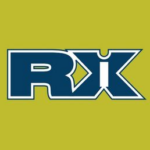Numerous studies from the U. S. and countries around the world have documented workplace surface contamination with antineoplastic drugs (see: https://www.cdc.gov/niosh/topics/hazdrug/ ). Typically, a small battery of some of the more commonly used drugs are measured using wipe sampling methods. Contamination of drug vials, biological safety cabinets (BSCs), floors, counters, and other surfaces is common in places where these drugs are prepared. The primary route of exposure to antineoplastic drugs is postulated to be by transdermal uptake following skin contact. Therefore, eliminating surface contamination should also reduce or eliminate the possibility of uptake of the drugs by healthcare workers.
Many researchers have attempted to develop a universal method to clean and/or protect uncontaminated work surfaces that have become contaminated with these drugs. Unfortunately, no single agent is 100% effective against all types of drugs. As one example, it was shown in a study by Bartel et al. 2018, it is pretty much impossible to totally clean a surface that has previously been contaminated with antineoplastic drugs.
One obvious solution is not to contaminate the surface in the first place. Preparing I.V. bags from drug vials while maintaining a sterile product is a labor-intensive procedure. Leaks, drips, and spills can and often do occur. Even the use of closed system drug transfer devices (CSTDs) does not completely eliminate contamination of worksurfaces, possible due to the contribution from the contaminated drug vials.
The use of an underpad or preparation mat when preparing hazardous drugs in a BSC has been one recommendation to reduce surface contamination. However, if a pad is not replaced after each use, it will itself become a source of contamination. In addition, a contaminated pad will have to be removed and disposed of which could lead to spread of the drugs.
Activated carbon has been used for many years to remove toxic chemicals from a number of sources such as water, air, etc. It has a very high adsorption efficiency and a very low desorption efficiency. Several years ago, I was working to develop air sampling methods for antineoplastic drugs. One of the matrices we employed was activated carbon. We found that when we spiked the various matrices with antineoplastic drugs, the drugs were so tightly bound to the activated carbon matrix we were not able to desorb the drugs, even with strong solvents.
The idea of a preparation mat in combination with activated carbon is a unique idea to reduce/eliminate surface contamination and thus worker exposure to antineoplastic and other hazardous drugs. Compared to no pad or a regular prep pad, an activated carbon impregnated pad offers an extra layer of protection from potential exposure to antineoplastic and other hazardous drugs.
When cleaning surfaces, using a wipe that is impregnated with activated carbon, adds an additional layer of protection for both the worker and the environment by trapping the drugs so that they are not spread around as they would be with a normal wipe.
The RxCarbon® Poly Surface Protection Pads and Clean-Up Wipes are the only products, of their kind, to include impregnated Activated Carbon to deactivate hazardous and controlled drugs (www.rxcarbon.com ). As such, they protect healthcare workers and the environment. Learn More >





